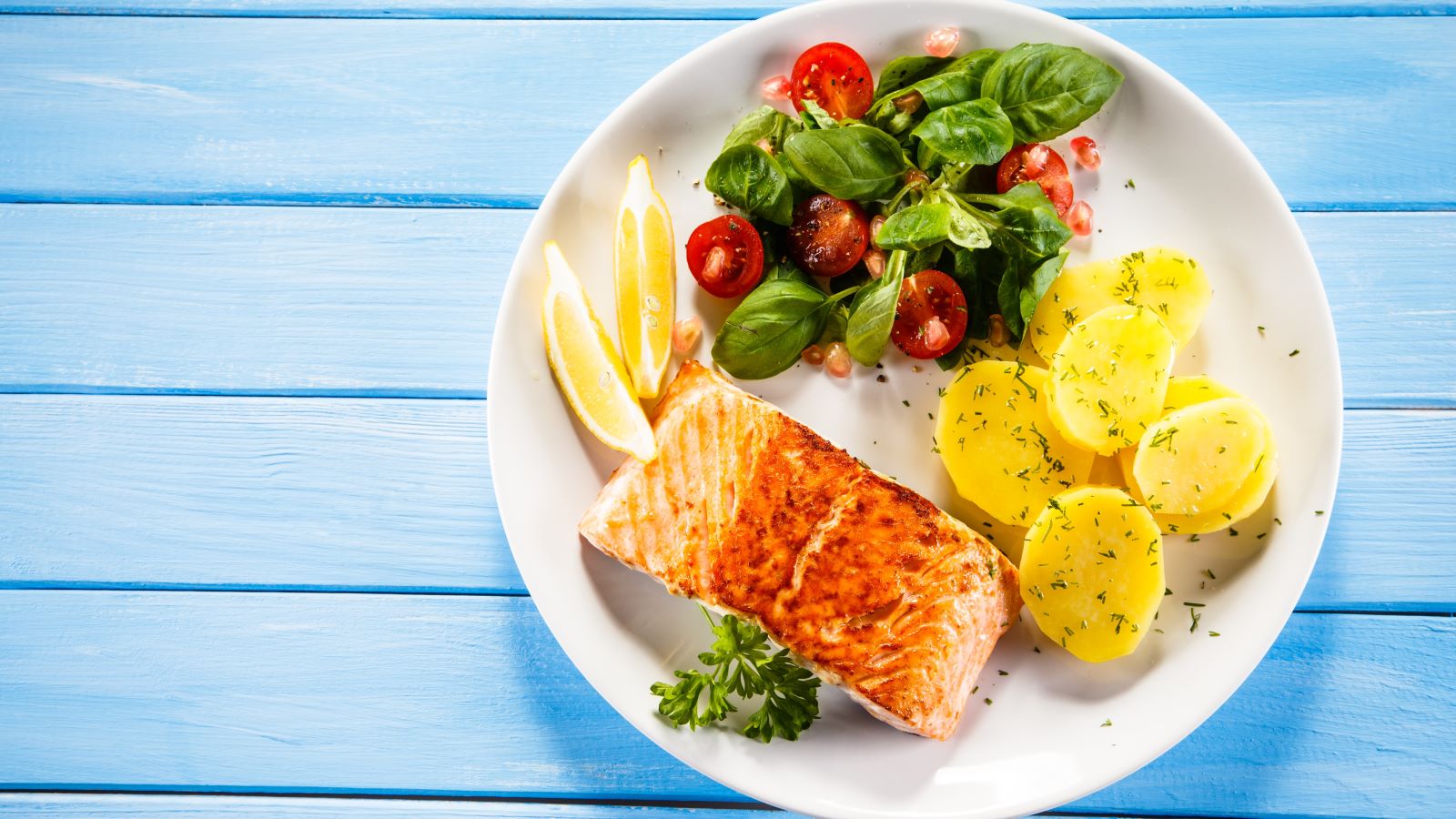<< Back
3 Tricks for Better Portion Control

December 19, 2023
Watching what you eat is only half the battle in reaching a healthy weight. Keeping an eye on how much you eat – even healthy foods – is just as important.
“No matter how healthy the choices, calories, fats, oils and salt can add up very quickly if you’re eating multiple servings,” notes Danielle Friedman, MD, a bariatric surgeon with Hartford HealthCare in Bridgeport and Wilton.
Here’s what you need to know about portion sizes and weight loss, according to a weight loss surgeon.
Portions and servings are not one and the same.
If you rely on calorie counting for weight loss, it’s important to differentiate between servings and portions. Calorie counting usually only reflects one serving, while portion can vary from one person to another, says Dr. Friedman.
“A portion is actually whatever we choose to make it. ‘Portion size’ just means the quantity we choose to eat or put on our plate. If we’re not careful, a single portion can contain multiple servings, doubling or tripling caloric intake and other nutrition values,” Dr. Friedman explains.
> Related: 4 Ways to Add Vegetables to Your Diet – Even If You Hate Them
Stick with portions that are equal to the serving size.
Tracking nutrition values is much easier if you make each portion roughly equal the serving size, which can be found on labels of packaged foods. For foods you make yourself, or that don’t have packaging, websites or apps like My Fitness Pal allow you to look up the information.
“An electronic kitchen scale can help you recognize what a serving looks like,” she says, adding that prepackaged single-portion foods can also be a guide.
Three tricks for better portion control.
- Use these visual cues for easier portion control. General nutritional guidelines suggest everything on our plate be smaller in volume than a closed fist or tennis ball, except for vegetables which can be essentially unlimited. Other visual comparisons, Dr. Friedman says, include:
- Domino = a 2-ounce serving of cheese.
- Deck of cards (or an open palm) = the recommended 2- to 3-ounce serving of meat, poultry or fish.
- Fist (about a cup) = serving of pasta, rice, cereal or fruit.
- Top of your thumb = how much fat (butter, mayo or salad dressing) you should have.
- Follow the “MyPlate” method. Dr. Friedman also suggests following the “MyPlate” method of food portions promoted by the U.S. Department of Agriculture. With that:
- One quarter of the plate is protein.
- One quarter is starch (potatoes or corn) and grains, preferably a whole grain.
- Half is for vegetables and fruit.
- Eat mindfully to feel more satisfied. Restricting how much you eat may leave you feeling unsatisfied at the table, but Dr. Friedman suggests practicing mindful eating to help guide you. “Take time to look at, chew, taste and smell the food and focus only on eating,” she says. To do this try:
- Focusing on the food. Eating in front of the TV or doing other tasks usually leads to bigger portions than we intend and need.
- Eating slowly. Rushing doesn’t give the stomach or brain time to recognize fullness.
- Downsizing your plate. Smaller plates help us think about portion size in a healthy way, and give visual cues for fullness.
Portion control is key to a healthy diet.
Portion control is a great place to start a weight loss journey because it also helps you be aware of what you’re eating, Dr. Friedman notes.
“Keeping a food journal with portion sizes, or taking photos with your phone, is often a crucial first step to seeing what you eat and starting to make healthier choices,” she says. “While all weight loss efforts need a multifocal approach, including physical activity and care for related medical conditions, the cornerstone of successful weight management is a healthy diet with controlled portions.”